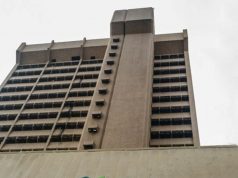NOVEMBER 12, 2018 – Debt profile Nigeria might return to the detrimental debt situation of the 1980s and early 2000s. It will be recalled that Nigeria was removed from the manacles of debt encumber in 2006 through a US$18 billion debt buy back arrangement that saw the country pay over US$12 billion to the London and Paris clubs under the President Olusegun Obasanjo government.
Under the debt burden, the country was forced to espouse asceticism measures culminating in the Structural Adjustment Programme (SAP) that drastically destabilised aptitude for service delivery and social protection. The country’s rising debt burden is worrisome.
We became subject to creditor conditionality whenever it was unable to meet its obligations in times of recession or crisis. The IMF has also consistently warned Nigeria of the consequences of the high cost of servicing debts, which could consume ample amounts of government revenue. Already, two-thirds of Nigeria’s tax revenue is at present applied to servicing debts annually. When a country has to spend significant parts of its revenue on huge debts, it has very little left to fund services and development. This affects important social infrastructure such as health and education.
Some have argued that Nigeria’s debt-to-GDP ratio remains low at 19 per cent, which makes it safe to borrow. This is wrong given that for a developing country like Nigeria, what matters is the debt service-to-revenue ratio, which should concern every Nigerian.
Statistics from the Debt Management Office (DMO) show that Nigeria’s external debt commitment rose by $11.77 billion in the last three years, from $10.32billion in June 2015 to $22.08 billion as of June 30, 2018. This means that the country’s external debt has grown by 114.05 per cent in the last three years. Multilateral debt made up $10.88billion or 49.28 per cent of the country’s external debt profile.
Nigeria has moved from “low risk of debt stress” to “a medium risk of debt distress”. There is a basis, therefore, to assume that it will move on to “high-risk of debt distress” in the near future. There is a clear and present possibility of entry into a major debt trap in the near future if urgent and adequate measures are not taken to shore up Nigeria’s revenue collection and control borrowing. In this regard, deepening revenue collection will require plugging leakages and diversifying revenue sources
Nigeria’s debt profile which now stands at N21.73 trillion from N12.2 trillion in June 2015 has raised too rapidly raising fears amongst concerned stakeholders that such development doesn’t bodes well for an economy still struggling
Nigeria faces a debt crisis which has the tendency to further weaken the already troubled economy. The Debt Management Office recently put Nigeria’s debt profile at N21.73 trillion as of December 31, 2017, up from N12.2 trillion as of June 30, 2015.
The growth forecasts are premised on expectations that oil and metals prices will remain stable and that governments in the region will implement reforms to address macro-economic imbalances and boost investment.
The Federal Government recently requested the approval of a $5.5 billion foreign loan from the National Assembly, but when you consider that more than sixty percent of revenues earned in Nigeria already go into debt servicing, the country is clearly moving into dangerous territory.
The central government alone has debt servicing costs of close to 50 per cent of revenues, which in my opinion, limits fiscal flexibility. Nigeria’s external debt rose to $18.91 billion (N5.787 trillion) as at the end of December 2017, while domestic debt rose to N15.937 trillion, bringing the total debt stock of the country to N21.725 trillion ($70.92 billion), latest data released by the Debt Management Office (DMO) had shown.
Viewing that the government’s strategy of refinancing local loans with increased foreign loans should ease pressure on revenues for as long as there is no depreciation of the naira, should there be a significant weakening of the naira against the dollar however, and the country may find itself in a bad situation.









